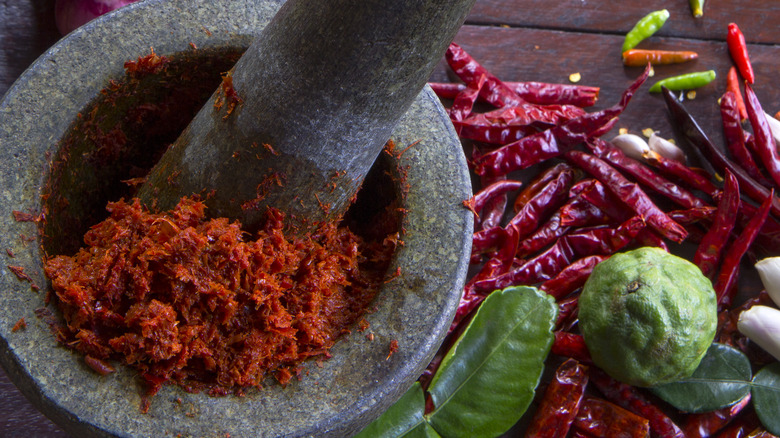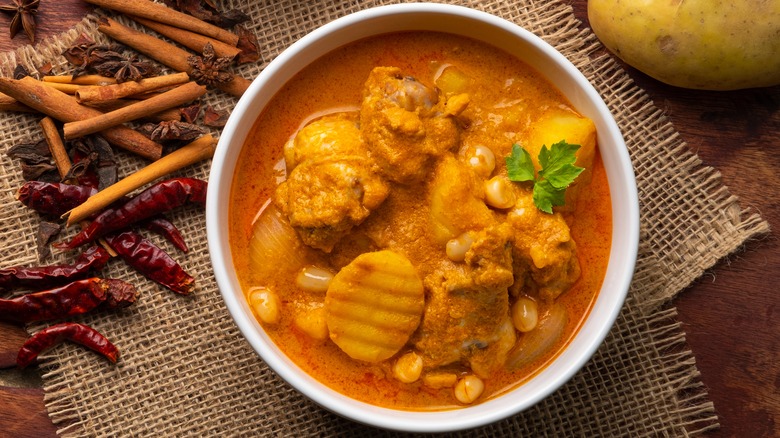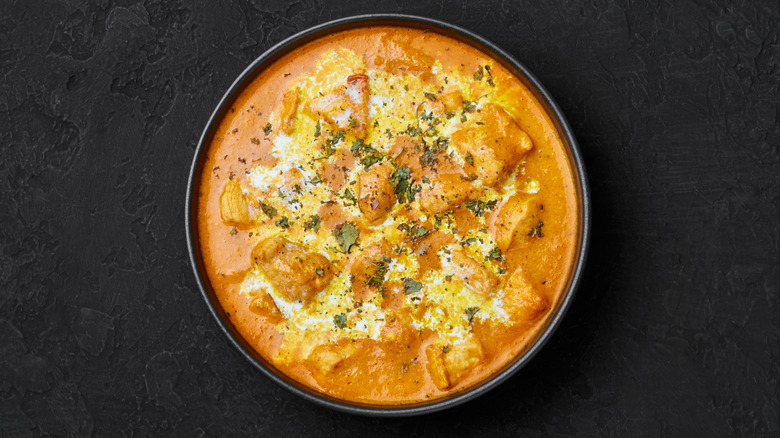The Key Ingredients You Need For Transforming Curry Paste Into Sauce
Curries are an iconic comfort food, deep with flavor and always guaranteed to warm our hearts and bellies. It may come as a surprise to find that curry isn't actually an Indian word; it's more likely to be a colonial phrase of Portuguese origin. The history of curry is enlightening, but so is knowing how to transform it from a paste into a sauce, and what key ingredients are vital to this.
There may indeed be some of you that buy a curry sauce pre-made, but there is real beauty in learning how to utilize a paste correctly to make a sauce. And once you've mastered that, you can easily make curry without a recipe.
In case you're unfamiliar, a curry paste combines spices and herbs (dried or fresh), which embody the essence of the curry taste. A sauce, on the other hand, has a lighter flavor and a silkier, more liquid consistency. Once you know how to create a sauce from a paste — with the addition of coconut milk or vegetable stock — you can experiment with different recipes and completely new creations.
From paste to sauce
Making curry paste ahead of time, or buying it pre-made from the store, can save you plenty of time in the kitchen. Once you've got this ready, you can start building a curry sauce. Different curry pastes will resonate with other flavor profiles and require different ingredients to transform them into a sauce. For Thai curry pastes, the ingredients are spicy, fresh, and fragrant, like red chili, lemongrass, garlic, ginger, or shrimp paste.
Pairing with this paste to make a Thai curry is usually coconut milk, coconut cream, or stock. Sometimes even a mixture of all three is added to the paste to make a sauce. Thai green curry paste, for example, is mixed with coconut milk and then lightened with chicken stock. This unfolds the robust paste flavor and unravels each layer of spice. So instead of a punch, the sauce becomes a ladder of complimenting elements.
Indian curry sauces
Indian curry pastes can be transformed in a similar way. Indian pastes can include, but are not limited to cumin seeds, coriander seeds, ginger, garlic, turmeric, tomato paste, and garam masala. Unlike Thai curry pastes, Indian pastes can be made entirely with dried spices. In some recipes, the spices are toasted with onion and tomatoes, then pulsed through a food processor to create a paste. This paste is mixed with stock (vegetable or chicken), coconut milk, cream, or yogurt.
Take Chicken Tikka Masala, for instance, which uses heavy cream to create that thick, iconic sauce that's mild yet wonderfully flavorful. Consuming the spice blend in Indian curries would more than likely have you coughing up a lung, so it's crucial that these key ingredients thin the paste into a more palatable dish.
There are many differences between Indian and Thai curries, but similar ingredients such as stocks, coconut milk, and creams facilitate the transition from paste to sauce. Once the sauce is prepared, you have the liberty to explore these cuisines by adding other ingredients such as vegetables, meat, or pulses. The possibilities are endless.


